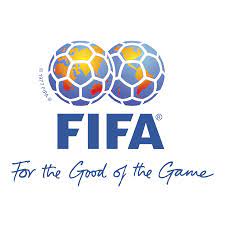The international football body FIFA has deployed the use of semi-automated offside being tested at FIFA Club World Cup in UAE this year. The limb-tracking technology gives accurate data to referees in seconds; 3-D animations show offside decision on big screens in stadium.
FIFA have held further successful tests of semi-automated offside technology (SAOT) during the FIFA Club World Cup™ 2021 in Abu Dhabi alongside 3D animations displayed on the stadium big screen and on television that give spectators greater insight into offside decisions.
After successfully being trialled at the FIFA Arab Cup™ last year, tests on the implementation of SAOT is being ramped up ahead of its expected use at the FIFA World Cup™ 2022 in Qatar.
SAOT has been used to support on-field officials with tight offside decisions on several occasions during the FIFA Club World Cup™.
The Chairman of FIFA’s Referee Committee Pierluigi Collina and FIFA’s Technology and Innovation team gave a demonstration of the technology at Mohammed Bin Zayed Stadium on Wednesday.
“We’re continuing a test to try to achieve the objective: to have more accurate decisions and also quicker decisions in offside incidents,” said Collina.
“I know that someone called it “robot offside”; it’s not.”
“The referees and the assistant referees are still responsible for the decision on the field of play. The technology only gives them valued support to make more accurate and quicker decisions, particularly when the offside incident is very tight and very difficult.”
The SAOT is an extension of the VAR system already employed in 47 countries across the world and in more than 100 competitions, including all FIFA tournaments.
Ten dedicated cameras, as well as several television broadcast cameras, are set up in the stadium to track 18 data points of each individual player, giving their position on the pitch.
The number of data points is expected to increase to 29 points per player by the time of the FIFA World Cup™.
This data, gathered 50 times a second, is then relayed to an AVAR specifically dedicated to offside decisions to check and make their recommendation to the VAR and the on-field referee.
This process happens in real time and so means decisions can be made on offside calls in seconds.
“We’re also tracking the limbs – we’re tracking the arms and the legs – and we know exactly where all those players are at every moment in the game,” explained FIFA’s Head of Football Technology Sebastian Runge.
“We are tracking with 50 frames per second, so 50 times per second we know where the players are and we’re getting that information delivered to the system.”
This combination allows for an assessment of whether a player is onside or not.
FIFA are also trialling the use of 3-D animations that clearly illustrate when a player is on or offside.
“We’ve introduced an offside animation, which is not related to the decision-making process, but certainly, it offers a better understanding and a clearer view of the offside/onside decision” said Collina.
“So, once the decision is made, this kind of animation starts to be produced and, a few seconds later, can better show what happened than using the normal 2D lines.”
These animations are created after the offside decision is made to provide a clearer picture to fans watching on television and in stadiums.
“With the semi-automated offside, we get data points, and these data points can be translated into an animation,” said Runge.
“So, we know where the shoulder is, we know where the knee, for example, is. And by taking that data, we can enter the 3D world and we can create animations, that can explain perfectly whether a player was onside, how much of that player was offside or onside, and we put that in an animation that will be shared with TV and our giant screen operators and we can inform the spectators in a clearer way on offside and onside decisions.”
FIFA will continue to trial these innovations at other FIFA competitions throughout this year.
“We know that it’s not easy to be fast and accurate at the same time, if you want to be accurate you need time,” said Collina.
“That’s why we thought of a technology that can make [the most] accurate and fast decisions possible.”


